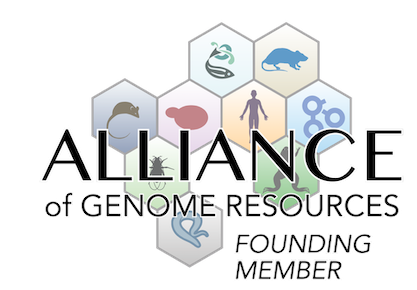homeostasis/metabolism
 |
• after house dust mite extract (HDM) sensitization and challenge, lung presqualene monophosphate (PSMP) levels remain similar to wild-type baseline levels, unlike in HDM-challenged wild-type controls where lung PSMP levels are ~2-fold higher than antigen-naive baseline levels, suggesting decreased conversion of presqualene diphosphate (PSDP) to PSMP
|
 |
• in vitro, bone marrow-derived dendritic cells (BMDCs) show significantly lower filipin III staining than wild-type BMDCs, indicating decreased free cholesterol content
• however, both BMDC size and LDLR-mediated cholesterol uptake by BMDCs are normal
|
 |
• mice exhibit significantly lower serum total cholesterol levels than wild-type controls both at baseline and after HDM sensitization and challenge
|
 |
• on day 16 of the HDM protocol (time of peak allergic inflammation), lung expression of genes encoding cholesterol biosynthetic enzymes is significantly lower than in HDM-challenged wild-type controls
• however, expression of these cholesterol biosynthetic enzymes is normal in baseline antigen-naive lungs
|
cellular
 |
• in vitro, uptake of tetramethylrhodamine (TMR)-labeled dextran (dextran-TMR) by bone marrow-derived dendritic cells (BMDCs) is reduced by ~50% relative to wild-type BMDCs
• uptake of labeled HDM (HDM-AF647) by BMDCs is also significantly decreased relative to wild-type BMDCs, though to a lesser extent than dextran-TMR uptake
• pretreatment of BMDCs with a macropinocytosis-specific inhibitor [5-(N-ethyl-N-isopropyl)-amiloride; EIPA] significantly inhibits dextran-TMR uptake irrespective of genotype and reduces HDM-AF647 uptake to a point where no genotype-specific differences are observed
• exogenous cholesterol loading significantly increases BMDC macropinocytosis of dextran-TMR irrespective of genotype and restores HDM-AF647 uptake by BMDCs
• however, reduction of in vitro micropinocytosis is not associated with changes in filopodia and lamellipodia formation or membrane ruffling
|
immune system
 |
• when lung and MLN DCs from HDM-sensitized mice are primed with ovalbumin and co-cultured with naive CD4+ T cells, a significantly lower % of IL-13+ CD4+ Th2 cells is observed when wild-type or antigen-specific (D011.10) CD4+ T cells are co-cultured with OVA-primed Plpp6-deficient DCs relative to wild-type DCs; similar trends of decrease are seen when naive Plpp6-deficient CD4+ T cells are used in co-culture with Plpp6-deficient DCs
• no differences in T cell proliferation are observed, suggesting DC rather than T cell dysfunction in response to allergen
|
 |
• on day 4 of HDM sensitization and day 16 of HDM challenge phase, the numbers of lung CD103+ DCs and monocyte-derived DCs (MoDCs) are both significantly lower than in wild-type controls
• on protocol day 16, the numbers of lung CD11b+ DCs are significantly decreased, with a trend towards lower numbers observed on day 4
• however, the numbers of lung CD103+ DCs, CD11b+ DCs, MoDCs, and plasmacytoid DCs are relatively normal at baseline and after a single HDM exposure (protocol day 2)
|
 |
• on day 16 but not day 4 of the HDM protocol, the numbers of lung plasmacytoid DCs are significantly lower than in wild-type controls
|
 |
• on day 16 but not day 4 of the HDM protocol, the numbers of mediastinal lymph node (MLN) CD103+ DCs are significantly higher than in wild-type controls
• however, the numbers of MLN monocyte-derived DCs and MLN CD11b + DCs are relatively normal on day 4 and day 16 of the HDM protocol
• moreover, expression of the DC chemotactic receptor CCR7 on MLNs DCs is normal on protocol days 2 and 4 (early allergen exposure)
|
 |
• on day 16 but not day 4 of the HDM protocol, the numbers of MLN plasmacytoid DCs are significantly higher than in wild-type controls
|
 |
• after HDM sensitization and challenge (day 16 of antigen challenge phase), mice exhibit a significantly lower total serum IgE level than HDM-challenged wild-type controls, suggesting a defect in the early events of allergen sensitization
|
 |
• in co-culture experiments, DCs sorted from HDM-sensitized mice and primed with ovalbumin are less effective at instructing naive CD4+ T cells to differentiate into CD4+ Th2 effector cells in response to allergen
• after a single intranasal instillation of labeled HDM (HDM-AF647), mice show significantly lower %s and numbers of lung HDM-AF647+ DCs 24 h after instillation
• after repeated HDM exposure (2 doses of unlabeled HDM plus 1 dose of HDM-AF647), the %s and numbers of lung HDM-AF647+ DCs are normal, but the lung DC HDM-AF647+ median fluorescence intensity (MFI) is significantly reduced, esp. in CD103 + DCs and CD11b + DCs; a similar decrease is seen in the DC HDM-AF647+ MFI in the MLNs, suggesting decreased in vivo allergen uptake
• however, DC migration appears unaffected as the numbers of HDM-AF647+ DCs in the lung draining MLN are not significantly decreased
|
 |
• after HDM sensitization and challenge, mice exhibit reduced lung inflammatory responses on protocol day 16 (peak allergic inflammation), with decreased histological signs of leukocyte infiltration and mucous cell metaplasia, significantly lower total serum IgE, lung total leukocyte (CD45+), eosinophil and neutrophil (PMN) numbers, and lung mRNA expression of Il4, Il5 and Il13, and trends towards decreased type 2 cytokine levels in lung homogenates and CD4+ T cells (IL-5 and IL-13) and type 2 innate lymphoid cells (IL-5)
• however, no changes are noted in alveolar macrophage numbers, total T cell numbers, MLN CD4+ T cell cytokine expression or memory B cell numbers in lungs, MLNs and spleen on day 16 of the HDM protocol, or in airway hyperresponsiveness to methacholine
• in adoptive transfer studies, wild-type mice receiving HDM-exposed Plpp6-deficient BMDCs and then airway challenged with HDM show protection from allergic lung inflammation, with significantly lower numbers of lung eosinophils, T cells, alveolar macrophages, and lung CD103+, CD11b+ and plasmacytoid dendritic cells than mice receiving wild-type BMDCs, with no major changes in MLN DC numbers
|
 |
• after a single HDM exposure (protocol day 2), expression of MHC-II on MLN CD103+ DCs and CD11b+ DCs is significantly lower than in wild-type controls
• however, MHC-II expression is further reduced to a similar extent as in wild-type MLN CD103+ DCs and CD11b+ DCs on day 4, and no significant differences in MHC-II, CD40 or CD86 expression are noted on day 16
|
hematopoietic system
 |
• when lung and MLN DCs from HDM-sensitized mice are primed with ovalbumin and co-cultured with naive CD4+ T cells, a significantly lower % of IL-13+ CD4+ Th2 cells is observed when wild-type or antigen-specific (D011.10) CD4+ T cells are co-cultured with OVA-primed Plpp6-deficient DCs relative to wild-type DCs; similar trends of decrease are seen when naive Plpp6-deficient CD4+ T cells are used in co-culture with Plpp6-deficient DCs
• no differences in T cell proliferation are observed, suggesting DC rather than T cell dysfunction in response to allergen
|
 |
• on day 4 of HDM sensitization and day 16 of HDM challenge phase, the numbers of lung CD103+ DCs and monocyte-derived DCs (MoDCs) are both significantly lower than in wild-type controls
• on protocol day 16, the numbers of lung CD11b+ DCs are significantly decreased, with a trend towards lower numbers observed on day 4
• however, the numbers of lung CD103+ DCs, CD11b+ DCs, MoDCs, and plasmacytoid DCs are relatively normal at baseline and after a single HDM exposure (protocol day 2)
|
 |
• on day 16 but not day 4 of the HDM protocol, the numbers of lung plasmacytoid DCs are significantly lower than in wild-type controls
|
 |
• on day 16 but not day 4 of the HDM protocol, the numbers of mediastinal lymph node (MLN) CD103+ DCs are significantly higher than in wild-type controls
• however, the numbers of MLN monocyte-derived DCs and MLN CD11b + DCs are relatively normal on day 4 and day 16 of the HDM protocol
• moreover, expression of the DC chemotactic receptor CCR7 on MLNs DCs is normal on protocol days 2 and 4 (early allergen exposure)
|
 |
• on day 16 but not day 4 of the HDM protocol, the numbers of MLN plasmacytoid DCs are significantly higher than in wild-type controls
|
 |
• after HDM sensitization and challenge (day 16 of antigen challenge phase), mice exhibit a significantly lower total serum IgE level than HDM-challenged wild-type controls, suggesting a defect in the early events of allergen sensitization
|



 Analysis Tools
Analysis Tools